VVAM Newsletter 95 – 2004
From the editors
As you can see, this Newsletter, compiled in August, has landed on your doormat around the time of the 60th commemoration of the Battle of Arnhem. To mark the 60th commemoration it is accompanied by an extra-long Ministory.
The next number of the Newsletter will be enlarged to include full reports on the commemoration’s major events. It will be issued in November.
New curator/deputy director
We introduced him in the previous Newsletter, and now the Airborne Museum ‘Hartenstein’ has its new curator/deputy director. He is 49 year-old Frans Smolders from Nijmegen, who took up his post on 1 July last. He was selected from approximately 90 applicants for the advertised vacancy. The appointment is provisional for two years, and his salary will be met by a subsidy made available by Renkum council. For the past few years Wybo Boersma has filled the post of museum director,
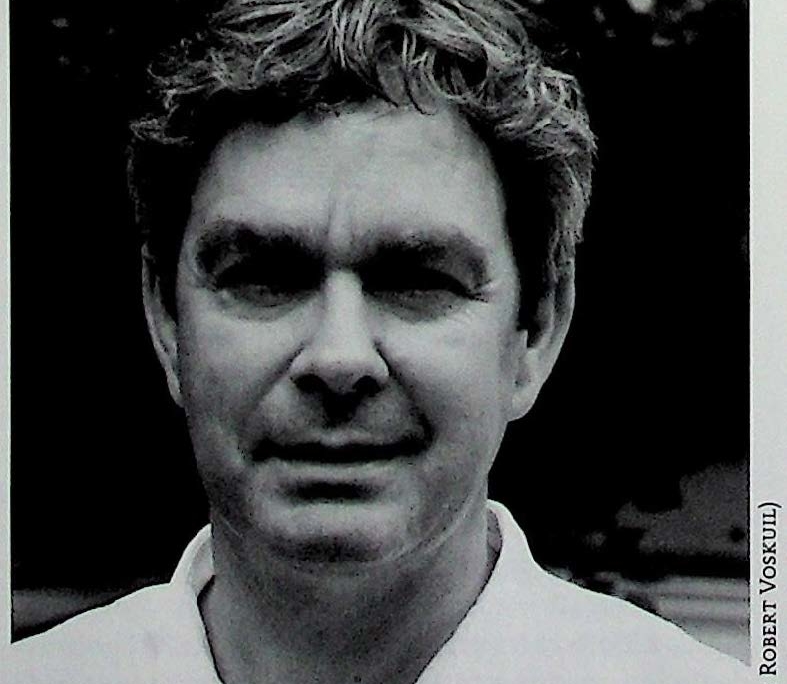
Frans Smolders, the new deputy director/curator of the Airborne Museum.
unpaid, during which time he has got through a tremendous amount of work. He takes leave of the post on 1 October next.
Frans Smolders is widely experienced in the field of museum organization. After completing his studies in the History of Art he expanded his knowledge in such places as the Utrecht University Museum, and more recently in the amalgamation of the various museum-connected services in Apeldoorn.
His most important task over the coming two years will be the development of a policy plan for the future of the museum. Main points for attention will be the modernization of the entire collection and a possible extension of the museum.
Mr Smolders is greatly impressed by the Airborne Museum’s excellent and imposing collection, and by all the knowledge that has been gathered. However, he would like to place more emphasis on the human stories behind the exhibited material. At the moment the focus is on the military operation, which is dealt with in roughly chronological order. More attention could be paid to the personal fate of the servicemen and the civilians, whose world was suddenly transformed into a battlefield.
The lack of space in the museum hampers the development of a modem exhibition. Huize Harten-stein is a national monument, so the possibility of alteration/adaptation is virtually non-existent. Therefore, Mr Smolders has in mind an under¬ground extension along the lines of the plan devel¬oped some years ago for the Friends’ Society. This would allow the organisation of large exhibitions with regularly changing themes.
Frans would also like to see the Hartenstein ‘villa’ returned to something like its former glory. For example, at the moment all the windows are shut-tered or boarded-up, thereby excluding visitors from the beautiful surroundings.
The attention of visitors, especially the younger ones, quickly diminishes when the presentation is of a static nature, and for this reason still more use will need to be made of modern audio-visual methods and computer techniques in the future. A small film theatre could also be introduced.
Frans Smolders believes that the library and archives are an integral part of the museum collec¬tion. It would be far better if this material were to be made accessible, catalogued and digitalized, thus enabling optimum use to be made of the facility. Co-operation and exchange of information with other museums and archives will also receive greater priority.
The museum’s financial base needs to be expanded, so efforts will be made to attract sponsors.
Frans Smolders hopes, together with the two other permanent staff – Berry de Reus (logistics manager) and Roland Boekhorst (maintenance) – and the enthusiastic 20-strong group of volunteers, to make the museum even more interesting and educational than it already is. And of course, the Friends’ Society is delighted to be involved in this venture!
Theme afternoon, 20 November
Our Society is organizing a theme afternoon to be held in the Concert Hall, Oosterbeek on 20 November next.
The programme is as follows:
13.30-14.00 hours: Reception of the members.
14.00-15.00 hours: Lecture by Alex Junier about the
‘2nd Battalion The South Staf-fordshire Regiment’. The book ‘By Land Sea and Air’, written by Alex in conjunction with Bart Smulders, was published in 2003.
15.00-15.45 hours: BREAK.
15.45-16.30 hours: Continuation of the lecture by Alex Junier.
Ca. 17.00 hours: Close of the theme afternoon.
Veteran donates motor mower
A very unusual event took place at the Airborne Cemetery in Oosterbeek on 13 July last. Eighty-year- old Arnhem veteran Frank Moore handed over a motor mower he designed himself, to the staff of the Commonwealth War Graves Commission.
In September 1944, Lieutenant Frank Moore was Troop Leader of F Troop, 3rd Airlanding Light Regiment Royal Artillery. During the Battle of Arnhem, F Troop’s 75mm Pack howitzers were positioned in the meadows immediately behind the Old Church in the Benedendorp (Lower Village), Ooster-beek. Troop headquarters was located in the south wing of the church. One of the dioramas in the Airborne Museum cellar shows F Troop in action.
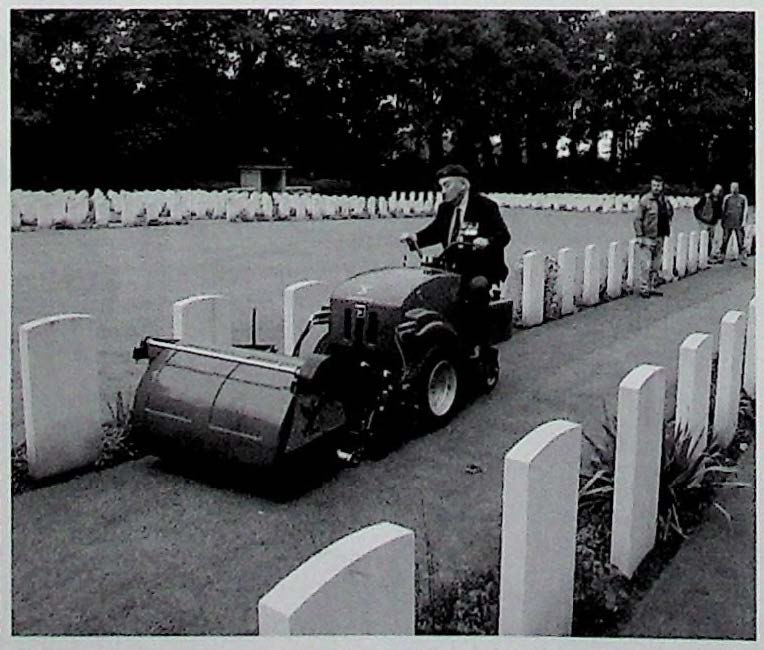
Arnhem veteran Frank Moore demonstrates his own design of motor mower at the Airborne Cemetery in Oosterbeek.
During this time Frank Moore escaped death on a number of occasions, one being when he was in the church spire directing fire from the Light Regiment’s howitzers onto the German positions. From a small shutter in the east side of the tower he had an excellent view of the surroundings. However, the Germans noticed what was going on, and a German tank fired a salvo which hit the spire just below where Lt. Moore and his signalman were situated. Luckily they were able to come down unharmed.
The second time was during the evening of 25 September. Moore was standing near the church discussing the German positions with a Forward Observation Post Officer from the 43rd Wessex Division, Captain Thomas ‘Zeke’ Rose. Captain Rose, a colleague and a few others had managed to get across the Rhine. The Germans opened fire with a machine gun, narrowly missing Frank Moore but hitting Captain Rose. He died the following day (see Ministory 46 dated May 1995: ‘A 30 Corps veteran recalls’, by Major Douglas G. Goddard, RA (retd)), and the book ‘Arnhem, The Airborne Battle’ by Martin Middlebrook, 1994/2004).
As Frank Moore wrote later: ‘The longer the battle continued, the more F Troop’s position came to resemble a moon landscape. The tyres of the how-itzers were destroyed by shell and mortar fire, mak-ing the guns difficult to relocate and manoeuvre’. The gun crews were forced to dig deep slit trenches, which they roofed over with empty ammunition boxes and earth to provide some sort of cover against shell and mortar strikes.
But every time the order ‘Take Post’ (action stations) was given, the gunners left their slit trenches with¬out hesitation, and manned their virtually unpro¬tected guns in the open field. This created enormous admiration among the infantry units dug-in in the area. Major Cain, who was awarded a Victoria Cross for his part in the battle, later wrote a letter in which he referred to the steadfastness and courage of the gun crews, as an example to the others who shared with them the positions near the Oude Kerk. Frank Moore was among the lucky ones who came back over the Rhine at the end of the battle. He was demobbed in 1948, and then followed a long and successful career in the production of agricultural machinery. When he retired he concentrated on the design of very advanced motor mowers for large lawns. These machines are fitted with all the latest in technical innovation, and are now manufactured by his own company, ‘Moore Mowers Limited’ in Beaminster (Dorset).
Frank Moore recently decided to donate a specially designed mowing machine to the Commonwealth War Graves Commission for use at the Airborne Cemetery in Oosterbeek and other cemeteries in the region, in memory of all old friends and colleagues who are buried there’.
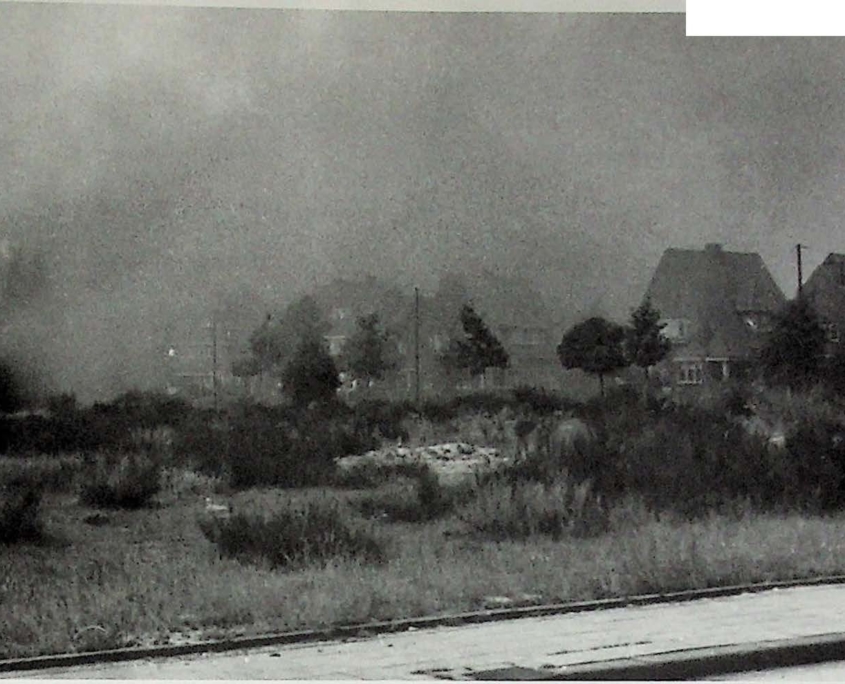
Photo of an unknown location in Arnhem, taken on 17 September 1944. Does anyone know where this is?
British Weekend 2005
It is intended to organise the third ‘British Weekend’ in Oosterbeek in June 2005 for our members in the United Kingdom. People who wish to book for this trip should contact Niall Cherry, who can also pro-vide additional information. The programme will be more or less the same as for the two previous visits. On Saturday a (probable) walk will take place in a number of historical locations, followed on Sunday by a slightly longer trip in (historic) vehicles.
(Niall Cherry, 3 Church Road, Warton, Lancs, PR4 1BD, United Kingdom,
e-mail: niall.cherry@baesystems.com)
Who can help?
The Second World War Photo Collection at the Gelders Archief (compiled by the former Gemeen- tearchief Arnhem) includes a number of prints from an extraordinary album.
The album was put together in the 1940-1945 period by Dr. R.S. Tjaden-Modderman, and contains many photos taken by him in the Gelderland capital. We have included one of the shots here. Unfortunately, we only know the date: 17 September 1944. Who can tell us exactly what the picture shows? Are the clouds of smoke the result of the allied bombing that preceded the airborne landings? Where was the photographer standing when he took the photo?
Your answers please to the editors! Incidentally, we have received a number of valued responses to the previous ’Who can help?’ question. We shall return to this in the next Newsletter.
Airborne Monument repaired
Earlier this year members of the Friends’ Society and the Monuments Commission issued a warning about the poor condition of the Airborne Monument opposite the Hartenstein museum. Those present at the Friends’ AGM will no doubt recall the lively dis-cussions this subject generated. These seem to have had results because in July this year council employ-ees were to be seen busily carrying out repair work. Sections of the brickwork have been renewed, along with many broken and crumbling bricks. The origi¬nal yellow, soft bricks used in the building of the monument in 1945 are very vulnerable to damage and weather effects. Luckily enough, a brick type was found that was virtually the same colour as the immediate post war-bricks, and far stronger.
Actually, the Jacob Maris sculptures incorporated in the monument are also in need of a thorough reno-vation, but that will be done in due course by experts.
WW II RAF bomb found
On 28 May last, a five-hundred pound British bomb was unearthed from beneath the Zypse Poort rail¬way viaduct in Arnhem during excavation work. Work was stopped immediately, a wide area was cor¬doned off, and railway traffic was halted. Further investigation by the Bomb Disposal Unit, which had been alerted, revealed that the fuse had already been removed, and the bomb was therefore declared safe. The projectile was quickly taken by lorry to the dis-posal site at
Schuytgraaf in Arnhem-South.There is a reason why the bomb only came to light more than two years after work began at Zypse Poort. Work on clearing the tarmac layer, under which the bomb was found, only began in late May. It was just one metre below the surface.
It could be that the bomb was dropped on Sunday 17 September 1944 during one of the bombing raids that preceded the allied airborne landings. The most important target in the area was the Willem Barracks, then being used by the Germans. The bar¬racks, which were destroyed in the raid, stood where Gele Rijdersplein stands today.
It is unclear why the fuse mechanism was missing. Perhaps someone in England forgot to fit it. What-ever the reason, the lucky sequence was that the bomb did not explode; the Zypse Poort survived the attack and has remained standing for almost sixty years! We shall come back to this bombing raid in one of our future issues.
Request for photographs
In June 2005 the Society of Friends of the Airborne Museum will celebrate its 25th anniversary, and nat-urally we don’t wish that milestone to pass un-noticed. You will be kept abreast of developments in future numbers of the Newsletter. One of the pro-posed initiatives is for the organizing of a small exhibition and/or a modest brochure of photographs about the Friends’ Society’s 25 year existence. And for these we are looking for photographs of excursions, meetings, theme days and so on. If you have any such material, and are prepared to make it available to us, could you please contact us by means of a short note or e-mail to our management (see Colophon). You will then be contacted some time in the near future. We thank you in anticipation of your help!
News from Niall
We have received the following message from our representative in Britain, Niall Cherry: ‘Sir John Killick passed away last February. Those familiar with the Battle of Arnhem will undoubtedly know that he commanded the 89th Parachute Field Security Section in September 1944. Captain J.E. Killick was photographed on 18 September 1944 while on patrol in Weerdjesstraat in Arnhem. The photograph was taken by the Jewish photograph¬er Sem Presser and is, in my view, one of the best photographs to come out of the Battle of Arnhem. It appears on page 87 in David van Buggenum’s book, ‘B Company Arrived’ – published in 2003 – as well as in other publications. The picture shows Capt. Killick with a holster and pistol strapped to his right leg. The pistol is a German Luger. Last year he told me how he came by the weapon, and I would like to recount this story in a future Newsletter’.
Oosterbeek For ever England
The booklet ‘Oosterbeek For ever England’ was pre-sented in the Airborne Museum on Saturday 31 July last. It is the result of a study by author Jan Crum (1940) into the texts on the headstones in the Airborne Cemetery in Oosterbeek. The inscriptions often reveal something about the personal back-ground of the dead. Relatives were allowed to sug¬gest the words they wanted to have engraved on the stone. Some opted for extremely personal, mov¬ing inscriptions, others for more general words. In his booklet Jan Crum has divided the inscriptions into different categories, such as sorrow, remem¬brance, sacrifice and admiration. He has tried to delve deeper into the backgrounds of all the texts. The booklet pays homage to all servicemen who gave their lives in the Battle of Arnhem.
The first copy was offered to ‘old-soldier’ Norman Rawlings, who came over from Britain especially for the occasion. ‘Oosterbeek For ever England’, by Jan G. Crum (ISBN 90-75665-65-2) is published by Uitgeverij Kontrast in Oosterbeek. The booklet is in two languages, Dutch and English, and comprises 96 pages. It is illustrated with photographs, and costs € 15.
Excavated at Papendal
In common with other places in this region, one also comes across slit trenches from the Battle of Arnhem at the Papendal Sports Centre to the north of Oosterbeek. Last year, Philip Reinders investigat¬ed a large number of these trenches, unearthing various objects while doing so. These were exhibit¬ed in the hall of the Papendal hotel/congress centre in August and September last.
One of the most remarkable finds was a rifle from the First (!) World War. The Germans probably ‘took possession’ of the weapon, dating from around 1917, in France in 1940. Later in the war, when their own weaponry was becoming scarce, this type of weapon was issued to less competent troops in the German army.
Another extraordinary object unearthed in one of the slit trenches was a small jar that had once con¬tained caviar!
COLOPHON
The Newsletter is a publication of the Society of Friends of the Airborne Museum Oosterbeek (SFAM) and appears four times per year. The objective is to promote the Airborne Museum, the SFAM and the history of the Battle of Arnhem.
Editors: drs. R.P.G.A. Voskuil and G.H. Maassen jr. Editorship address: Jan van Riebeeckweg 39, 6861 BD Oosterbeek; e-mail: vvam@planet.nl Coordination sending, archiving and distribution of back numbers: Chris van Roekel, Oosterbeek.
English translation: Cathrien and Peter Clark.
Design: Hildebrand DTP, Wageningen.
Print: Drukkerij Verweij Wageningen BV.
SFAM representative in the U.K.: Niall Cherry, 3 Church Road, Warton, Lancs PR4 1BD, tel. 01772 632764; e-mail: niall.cherry@baesystems.com Airborne Museum ‘Hartenstein’ address:
Utrechtseweg 232, 6862 AZ Oosterbeek, telephone 00 31 26 3337710;
e-mail: info@airbornemuseum.com

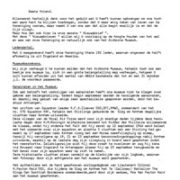
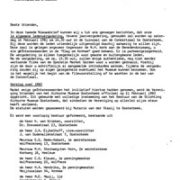
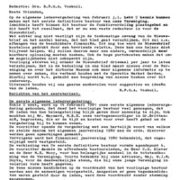
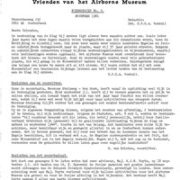
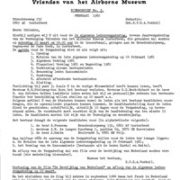
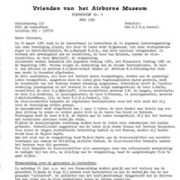
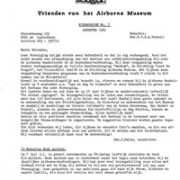
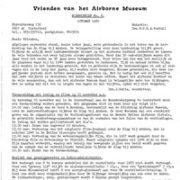
Plaats een Reactie
Vraag of reactie?Laat hier uw reactie achter.